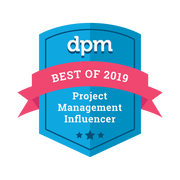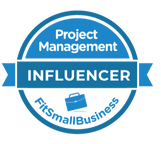Defining the project vs. defining the team
When we define the project we look at the purpose of the project, its background and what it’s ultimately trying to achieve. We examine who the sponsors and clients are and what success looks like to them. We also seek to understand what the high level requirements and constraints are in terms of quality expectations, timeframes, budget and desired solutions. These aspects are normally captured in the project charter or the definition document and should involve the team as much as possible.
We all know that defining the project is an essential starting point for running a successful project. It's simply not possible to plan, manage and deliver something, which we don’t know enough about. We also know that the project definition should be created with the team members for maximum buy-in as opposed to just presenting it to them. But there is more to it. We need to bring in the softer aspects too. Individuals are complex beings who have different ways of approaching situations and different ways of dealing with problems. It takes time for team members to get to know each other and to build up the kind of trust that’s needed for them to gel and deliver a great project. When project members don't invest time in each other, there is a risk that they will act like individuals in a group more than a cohesive team. That can lead to dysfunction, missed deadlines, misunderstandings and poor quality.
To create the best possible kick off and the best conditions for the team to deliver, the project manager needs to assist the team in finding its feet and agreeing how its members will work together. That’s a process which will take time, and which needs to be initiated right at the beginning when the team is formed. The project manager can kick-start the process in a few different ways:
Icebreakers – Icebreakers are great for making team members loosen up and get to know each other better. E.g. tell us something surprising about yourself. What would you say is a hidden talent of yours? What would make you go to work even if you didn’t get a salary for it?
Share a story – Ask each team member to share a story of a good or bad team experience they have had, and why that was. On that basis you can get a conversation going about the kind of team experience they would like to have on this project and what it would take.
Ground rules – Bring a stack of post-it notes and ask each team member to write down anything that’s important to them - one item per post-it note. One person might write that it’s important for team members to show respect and listen to each other when a comment, concern or question is raised. Another person might write that team members should socialize outside of work at least once every month. All of these items (or post-its) are potential ground rules that the team agrees to work to. Ground rules should not be set by the project manager but collectively by the team.
Team charter – During a project, tough decisions will need to be made and difficult situations overcome. For that to happen the team must build the habit of speaking openly to each other and expressing their concerns, hopes and fears. A great way to practice that is to ask it to produce a team charter. The charter clarifies the make-up and direction of the team and establishes boundaries. It is developed with contributions from all team members and should answer the following questions:
- What is our purpose? Why does the team exist?
- Which decisions and activities are inside the scope of our team?
- What are the measurable outcomes that we will be held accountable to?
- How will we treat each other? Which ground rules are important to us?
- How will we make decisions, resolve conflict and communicate?
- Which strengths and skills do we have?
- What are our weaknesses?
- What is each team member’s role? How will they contribute?
- How will we celebrate our successes?
- How can we summarize our ethos and purpose in a sentence or phrase?
Personality profiling – If you’re working with team members who are relatively open minded and mature, you can make use of personality profiling tools to increase self-awareness and knowledge about the team’s strengths and weaknesses. There are several tools on the market, including StrengthsFinder, DISC and Insights. It’s best to get a qualified coach to help you run these tools and explain the outcomes. The awareness generated by these tools has the potential to take the team to a completely new level. But the results can also be a real eye opener to people, so it’s important that an experienced coach is available to help them clarify any doubts or uncertainties.
Conclusion
Kicking off a project isn’t just a one-off meeting where the team is briefed about objectives, deliverables and timelines that have been set by the PM or Sponsor. Good kick-offs engage the team and draw it into the definition and planning process. Not least should team members be given the time and space to define their values and how they will approach decisions, communicate with each other and resolve conflict. The project manager can kick off this process by use of icebreakers, ground rules, team charters and personality profiling tools.
If you liked this post, you may also like:
10 Tips for Handling Conflict
How to fast-track your team member's growth
Overcoming Resistance to Change
What should you do in the first month to set yourself up for success?
How to avoid chasing people to get work done









 RSS Feed
RSS Feed